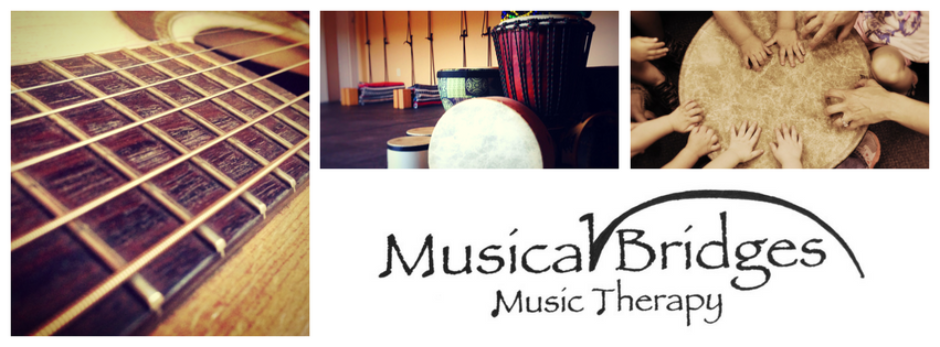Most people have witnessed the volunteer musicians at the hospitals here in our area. Sometimes they are playing music in the lobby and there are the harpists that provide supportive bedside music. Often times these musicians are referred to as providing “music therapy”. This is an important misunderstanding that I am wishing to address in this post.
There are very big differences in what a supportive musician does and what a music therapist does, and one should be careful when using the term “music therapy” to describe what is actually “supportive music”.
How is the Music Therapist (MT) different?
1) Education– All music therapists have a Bachelors, Masters or PhD in Music Therapy, have completed a 6 month practicum internship and have passed the Board Certification exam required by our profession which is only held by completing continuing education credits. This results in all music therapists having the title MT-BC (Music Therapist- Board Certified).
2) Assessment- MTs assess the patient’s current needs by evaluating blood pressure, heart rate, oxygen saturation, mood, musical preferences, etc. If there is no assessment, you cannot provide therapy. You must know what the patient needs are.
3) Treatment Plans– As with any therapy, after assessment you make a treatment plan which is revolved around the patient’s needs. This treatment plan involves measurable goals and objectives which are NON MUSICAL. Once the MT has assessed and determined the appropriate goals for the patient, music interventions are tailored specifically for meeting them.
4) Eclectic Musical Training– A music therapist rarely uses music of their own choice because we are devoted to the patient’s preferences. MTs are proficient in guitar, voice and piano and most often specialize in additional instruments. This allows for a variety of ways to treat the patient. In addition to instrumental knowledge, MTs are familiar with music from all time periods and different parts of the world. Without this generalized knowledge of music it becomes much more difficult to effectively treat patients, as musical preference is a large part of the therapy process.
5) We know the Do’s and Don’ts– Just because someone begins playing lovely lilting music does not guarantee positive results. Due to each and every person having a different physical and mental state (especially when being treated in the hospital) this means that each and every person has a different need. A speech therapist does not conduct the same protocol for all of their clients, nor does a physical therapist, because each person is different, and the treatment affects them all differently. In addition, music is a very powerful medium which affects physical and emotional states. Music can have negative effects just as easily as positive effects and if you are not trained in understanding these, then you may end up causing more harm than good.
To read an excellent testimony to the harm music can cause check out this blog article by Milestone Music Therapy
6) The Therapeutic Relationship- There are two parts to music therapy. Music and Therapy. Music does not act alone. Part of the therapeutic process is the connection between the therapist and patient. The MT is there to provide therapy along with music and we will not leave your side until we feel that we have helped accomplish your goals. Often times I spend more time talking with patients than actually playing music with them, because the music can access memories and emotions that may need to be worked through in the present moment. We will never bring tears to your eyes through a song and continue to the next song. We will never ignore a smile that is triggered through instrument playing. We are there for you emotionally, physically and spiritually. That is why it is called Music Therapy 🙂
I hope that this post helps to educate everyone about the difference in this issue that is so very often misrepresented. My intent was not to reject or put down the work of the volunteers who do spend their time with patients (as they are doing a wonderful thing!), but to stress the difference between music therapy and supportive music. Part of my job is to advocate for the proper representation of my profession and to educate the masses about what music therapy is. If you would like more information about music therapy you can visit the American Music Therapy Association’s website anytime or contact me with any questions!

Pingback: 10 Ways a Music Therapist Aids in Cancer Treatment | How Has Music Helped You Today?